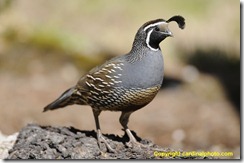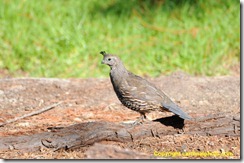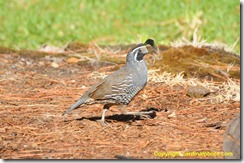- Photo Safaris
- Alaska Bears & Puffins World's best Alaskan Coastal Brown Bear photo experience. Small group size, idyllic location, deluxe lodging, and Puffins!
- Participant Guestbook & Testimonials Candid Feedback from our participants over the years from our photo safaris, tours and workshops. We don't think there is any better way to evaluate a possible trip or workshop than to find out what others thought.
- Custom Photo Tours, Safaris and Personal Instruction Over the years we've found that many of our clients & friends want to participate in one of our trips but the dates we've scheduled just don't work for them or they'd like a customized trip for their family or friends.
- Myanmar (Burma) Photo Tour Myanmar (Burma) Photo Tour December 2017 -- with Angkor Wat option
- Reviews Go hands-on
- Camera Reviews Hands-on with our favorite cameras
- Lens reviews Lenses tested
- Photo Accessories Reviews Reviews of useful Photo and Camera Accessories of interest to our readers
- Useful Tools & Gadgets Handy tools and gadgets we've found useful or essential in our work and want to share with you.
- What's In My Camera Bag The gear David Cardinal shoots with in the field and recommends, including bags and tools, and why
- Articles About photography
- Getting Started Some photography basics
- Travel photography lesson 1: Learning your camera Top skills you should learn before heading off on a trip
- Choosing a Colorspace Picking the right colorspace is essential for a proper workflow. We walk you through your options.
- Understanding Dynamic Range Understanding Dynamic Range
- Landscape Photography Tips from Yosemite Landscape Photography, It's All About Contrast
- Introduction to Shooting Raw Introduction to Raw Files and Raw Conversion by Dave Ryan
- Using Curves by Mike Russell Using Curves
- Copyright Registration Made Easy Copyright Registration Made Easy
- Guide to Image Resizing A Photographers' Guide to Image Resizing
- CCD Cleaning by Moose Peterson CCD Cleaning by Moose Peterson
- Profiling Your Printer Profiling Your Printer
- White Balance by Moose Peterson White Balance -- Are You RGB Savvy by Moose Peterson
- Photo Tips and Techniques Quick tips and pro tricks and techniques to rapidly improve your photography
- News Photo industry and related news and reviews from around the Internet, including from dpreview and CNET
- Getting Started Some photography basics
- Resources On the web
- My Camera Bag--What I Shoot With and Why The photo gear, travel equipment, clothing, bags and accessories that I shoot with and use and why.
- Datacolor Experts Blog Color gurus, including our own David Cardinal
- Amazon Affiliate Purchases made through this link help support our site and cost you absolutely nothing. Give it a try!
- Forums User to user
- Think Tank Photo Bags Intelligently designed photo bags that I love & rely on!
- Rent Lenses & Cameras Borrowlenses does a great job of providing timely services at a great price.
- Travel Insurance With the high cost of trips and possibility of medical issues abroad trip insurance is a must for peace of mind for overseas trips in particular.
- Moose Peterson's Site There isn't much that Moose doesn't know about nature and wildlife photography. You can't learn from anyone better.
- Journeys Unforgettable Africa Journeys Unforgettable -- Awesome African safari organizers. Let them know we sent you!
- Agoda International discounted hotel booking through Agoda
- Cardinal Photo Products on Zazzle A fun selection of great gift products made from a few of our favorite images.
- David Tobie's Gallery Innovative & creative art from the guy who knows more about color than nearly anyone else
- Galleries Our favorite images
Sigma 70-300mm DG OS Lens: Another Lightweight Winner for Budget Conscious Shooters
Sigma 70-300mm DG OS Lens: Another Lightweight Winner for Budget Conscious Shooters
Submitted by David Cardinal on Tue, 09/14/2010 - 12:09
![djc_1617[3] djc_1617[3]](http://www.cardinalphoto.com/files/David%20Cardinal/djc_16173_thumb.jpg) Moving beyond the kit lens is a big and very common step in upgrading your photo gear. One of the first lenses most photographers want to add is a better telephoto zoom. But their jaws drop at the size, weight and price of the big “pro” lenses so their next best choice is the very popular 70-300mm zoom. Nikon and Canon have great products in that range but at nearly $600 they’re more than many photographers paid for their camera and more than many of them want to spend. Fortunately Sigma has upgraded its popular 70-300mm Zoom to include both a motor and stabilization and kept the street price under $400…
Moving beyond the kit lens is a big and very common step in upgrading your photo gear. One of the first lenses most photographers want to add is a better telephoto zoom. But their jaws drop at the size, weight and price of the big “pro” lenses so their next best choice is the very popular 70-300mm zoom. Nikon and Canon have great products in that range but at nearly $600 they’re more than many photographers paid for their camera and more than many of them want to spend. Fortunately Sigma has upgraded its popular 70-300mm Zoom to include both a motor and stabilization and kept the street price under $400…
At 5” x 3” the Sigma is only a tiny bit smaller than the Nikon or Canon, but it is about 6 ounces lighter and more than $150 less expensive. So of course the next question is how the images stack up. I spent some time with a loaner unit and put it through its paces versus the known ultra-sharp Nikon 70-200mm f/2.8 AF-S to help you make your decision and as you’ll be able to see from the sample images included with this review it performed quite well.
The Sigma 70-300mm DG OS for Nikon is $399 at B&H, as is the Sigma 70-300mm DG OS for Canon. Versions are also available for Sigma, Pentax, and Sony/Minolta. Make sure you are looking at the new “DG OS” version as there are several older and less expensive versions of the Sigma 70-300 in the market that lack the build quality and image stabilization of the newest version.
Image Quality & Comparison
![djc_1617[3] djc_1617[3]](http://www.cardinalphoto.com/files/David%20Cardinal/djc_16173_thumb.jpg) This flower image was shot with the Sigma 70-300mm DG OS Lens on my full frame Nikon D700. I used 1600 ISO to make sure I had plenty of shutter speed (1/4000s at f/8) to maximize the sharpness even while stopping down the lens to f/8 for best results.
This flower image was shot with the Sigma 70-300mm DG OS Lens on my full frame Nikon D700. I used 1600 ISO to make sure I had plenty of shutter speed (1/4000s at f/8) to maximize the sharpness even while stopping down the lens to f/8 for best results.
Click on the image to see a higher resolution version.
![djc_2920[7] djc_2920[7]](http://www.cardinalphoto.com/files/David%20Cardinal/djc_29207_thumb.jpg) This image was taken with the ultra-sharp Nikon 70-200mm f/2.8 AF-S Lens—a $2,000 Pro lens on my D300S (the DX sensor at 200mm provides the same effective focal length as I got with the Sigma 70-300mm on my Nikon D700.
This image was taken with the ultra-sharp Nikon 70-200mm f/2.8 AF-S Lens—a $2,000 Pro lens on my D300S (the DX sensor at 200mm provides the same effective focal length as I got with the Sigma 70-300mm on my Nikon D700.
Click on the image to see a higher-resolution version you can compare to the same image shot with the $400 Sigma 70-300mm DG OS Lens with the same camera settings (1/3000s which is what the D700 metered, at f/8).
 I was pleasantly surprised to find that the Sigma focused fairly well with the Kenko Teleplus Teleconverter. While I’m not normally a fan of using any “mid-range” zoom (like the Nikon 80-400 or 70-300, Canon 100-400 or 70-300, or similar Sigma lenses) with a Teleconverter because of the loss of speed and sharpness, there is no denying the power of the combination of a DX sensor’s 1.5 effective focal length multiplier with a 70-300mm lens and a 1.4x Teleconverter. The result is an effective 600mm f/8 lens that fits in your pocket and costs about $600. A pretty compelling price and convenience point for those who don’t want to spend over $1,000.
I was pleasantly surprised to find that the Sigma focused fairly well with the Kenko Teleplus Teleconverter. While I’m not normally a fan of using any “mid-range” zoom (like the Nikon 80-400 or 70-300, Canon 100-400 or 70-300, or similar Sigma lenses) with a Teleconverter because of the loss of speed and sharpness, there is no denying the power of the combination of a DX sensor’s 1.5 effective focal length multiplier with a 70-300mm lens and a 1.4x Teleconverter. The result is an effective 600mm f/8 lens that fits in your pocket and costs about $600. A pretty compelling price and convenience point for those who don’t want to spend over $1,000.
This image was taken with the Sigma 70-300mm DG OS Lens and the Kenko. You can click on it to see a higher resolution version. It is not as sharp as images taken without the Teleconverter of course, or ones taken with a “native” 400mm lens, but for many uses the convenience may outweigh any image issues for you.
Field Test – Bird Photography
Okay, you’re probably saying “that’s nice but what about auto-focus and action images.” I was curious too so I put the Sigma 70-300 on my D300S, put my Kenko TC in my pocket and headed out to my favorite feeder. My first really pleasant surprise was how fun it was to shoot with the lens. It focused quickly with images snapping into focus in the viewfinder and with only a little more noise than the AF-S motors in my Nikon lenses. Even with the teleconverter on the combo was responsive—although at an effective aperture of f/8 with a teleconverter when zoomed to the long end it certainly wasn’t going to help much in low light. It’s never as simple to do “apples to apples” field tests between different lenses as studio tests since subjects are always changing, but to help you get a sense of your options I’ve posted three California Quail images below—all taken at the same feeder with similar lighting and similar cameras.
The first image was taken with a Nikon D300 and a $10,000 Nikon 600mm f/4 AF-S, the second with a Nikon D300s with the Sigma 70-300mm zoom, and the third with the Sigma lens plus the Kenko Teleplus teleconverter. The previews are linked to high resolution versions for you to compare. You can see that each image is slightly less sharp than the one before, which we’d expect, but of course the difference in cost and convenience is huge between the 20 lb. rig needed with the 600mm f/4 and the 4 lb. rig used for the others:
 Male California Quail photographed with Nikon D300 and Nikon 600mm f/4 AF-S
Male California Quail photographed with Nikon D300 and Nikon 600mm f/4 AF-S
 Female California Quail photographed with Nikon D300S and Sigma 70-300mm f/4-5.6
Female California Quail photographed with Nikon D300S and Sigma 70-300mm f/4-5.6
 Male California Quail photographed with Nikon D300S and Sigma 70-300mm f/4-5.6 and Kenko Teleplus 1.4x Teleconverter
Male California Quail photographed with Nikon D300S and Sigma 70-300mm f/4-5.6 and Kenko Teleplus 1.4x Teleconverter
The Bottom Line
If you don’t mind the extra cost then there is no question the Nikon’s silent wave (AF-S) focusing motor makes the Nikon 70-300mm AF-S VR f/4.5-5.6G Lens offers a premium shooting solution for Nikon shooters and Canon’s similar 70-300 f/4-5.6 IS USM does as well. They will both give you a quieter and perhaps slightly faster auto-focus for their higher cost.
NOTE: While we were working on this review B&H dropped the price on the Nikon 70-300mm AF-S VR f/4.5-5.6G Lens from $589 to $519, putting it within $150 of the price of the Sigma and within $10 of the Canon equivalent so there are lots of great options for every shooter depending on your budget.
- Log in to post comments

